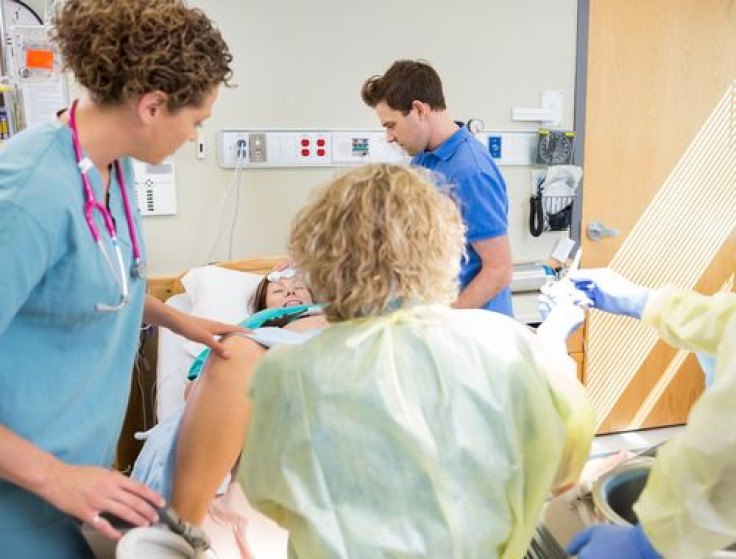Severe Perineal Tear During First Childbirth Increases Risk Of Recurrent Vaginal Tear In Future Deliveries

Bringing a baby into this world may be the most magical experience, but for most women who give birth naturally, it's also associated with painful vaginal tears. While holding the newborn may momentarily put all that pain on the backburner, a new study suggests that women who experience severe perineal tear in their first pregnancy are at risk of recurrent tear in subsequent ones. The study was published Wednesday in BJOG: An International Journal of Obstetrics and Gynaecology (BJOG).
Tearing during delivery generally occurs in the perineum — the area between the vagina and anus. The tear ranges from being superficial, when the top layer of the perineum gets grazed, to second-degree tear, which extends from the vaginal skin to the underlying tissue. Third- and fourth-degree tears are more severe, with third-degree extending from the vaginal wall and perineum to the edge of the anal sphincter, the muscle that controls the anus, while in fourth-degree, this tear extends right through the anus.
Severe perineal trauma — third- or fourth-degree tear, which can result in significant morbidity — has tripled from 1.8 percent to 5.9 percent between 2000 and 2012. In an attempt to understand how perineal tear during first pregnancy influenced future delivery choices in women and the extent of tearing in these future pregnancies, researchers conducted a population-based study.
The study tracked 639,402 first-time mothers who had a vaginal delivery of a single baby between April 2004 and March 2011, and a second birth before April 2012. Data came from the Hospital Episode Statistics (HES), which includes all maternity admissions in NHS hospitals. The research showed that 3.8 percent of women giving birth vaginally for the first time experienced severe tearing. Among these women, 24.2 percent underwent an elective C-section for their second birth, compared to 1.5 percent of women who did not tear at first birth.
Also, women who experienced tear at first birth were 7.2 percent more at risk of severe tear during their second vaginal delivery compared to a 1.3 percent risk in women without. This is a five-fold increase in risk. Third- and fourth-degree tearing at second birth may also occur if the baby is too big, forceps need to be used, or if the baby’s head and shoulder get stuck behind the pubic bone. Older women, women living in the least deprived communities, and women of Asian ethnicity were also more prone to severe tearing, according to the report, which suggests that women make proper choices between elective C-section and natural birth if they have suffered from severe perineal tear during the previous pregnancy.
"Our study shows that the relative risk of a repeat tear is a five-fold increase and the absolute risk of a repeat tear is about seven in 100. Clinicians should communicate both the relative and the absolute risk when discussing mode of delivery with women who suffered a severe tear in their previous pregnancy," said study coauthors Dr. Leroy Edozien and Dr. Ipek Gurol-Urganci in a press release. "Our results emphasise the need for clear national guidance for healthcare professionals on the optimal mode of delivery for women with a prior severe perineal tear so that they can be counselled appropriately."
According to John Thorp, BJOG deputy editor-in-chief, the study encompasses 96 percent of all deliveries in NHS hospitals in England over a seven-year period. It also represents the first piece of research into the mode of delivery and recurrence rate in a pregnancy following a third- or fourth-degree perineal tear.
"The results highlight the increased risk of severe tearing in women who have a third or fourth degree tear in their first delivery and therefore will help women along with a multidisciplinary team of healthcare professionals to make decisions about the mode of delivery in future pregnancies to ensure the best outcomes for mother and baby," Thorp said.
Source: Edozien L, Gurol-Urganci I, Cromwell D, et. al, Impact of third and fourth degree perineal tears at first birth on subsequent pregnancy outcomes: a cohort study, BJOG: An International Journal of Obstetrics and Gynaecology, 2014.



























